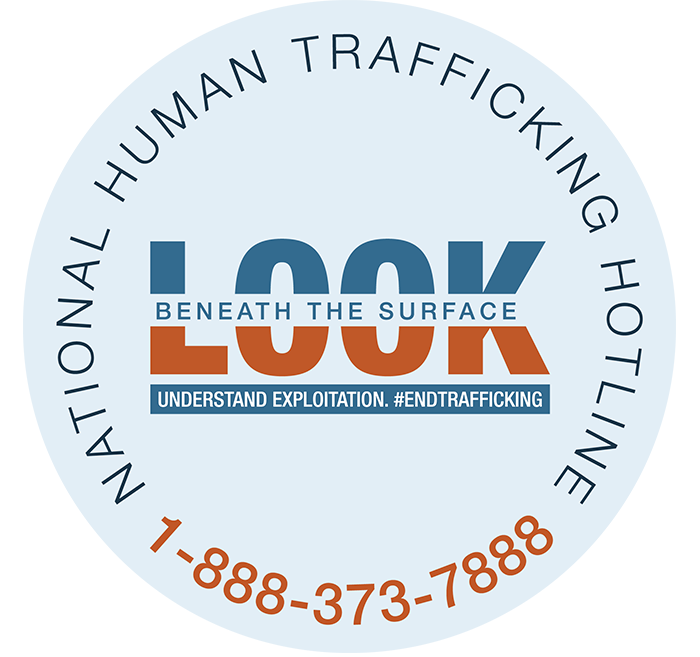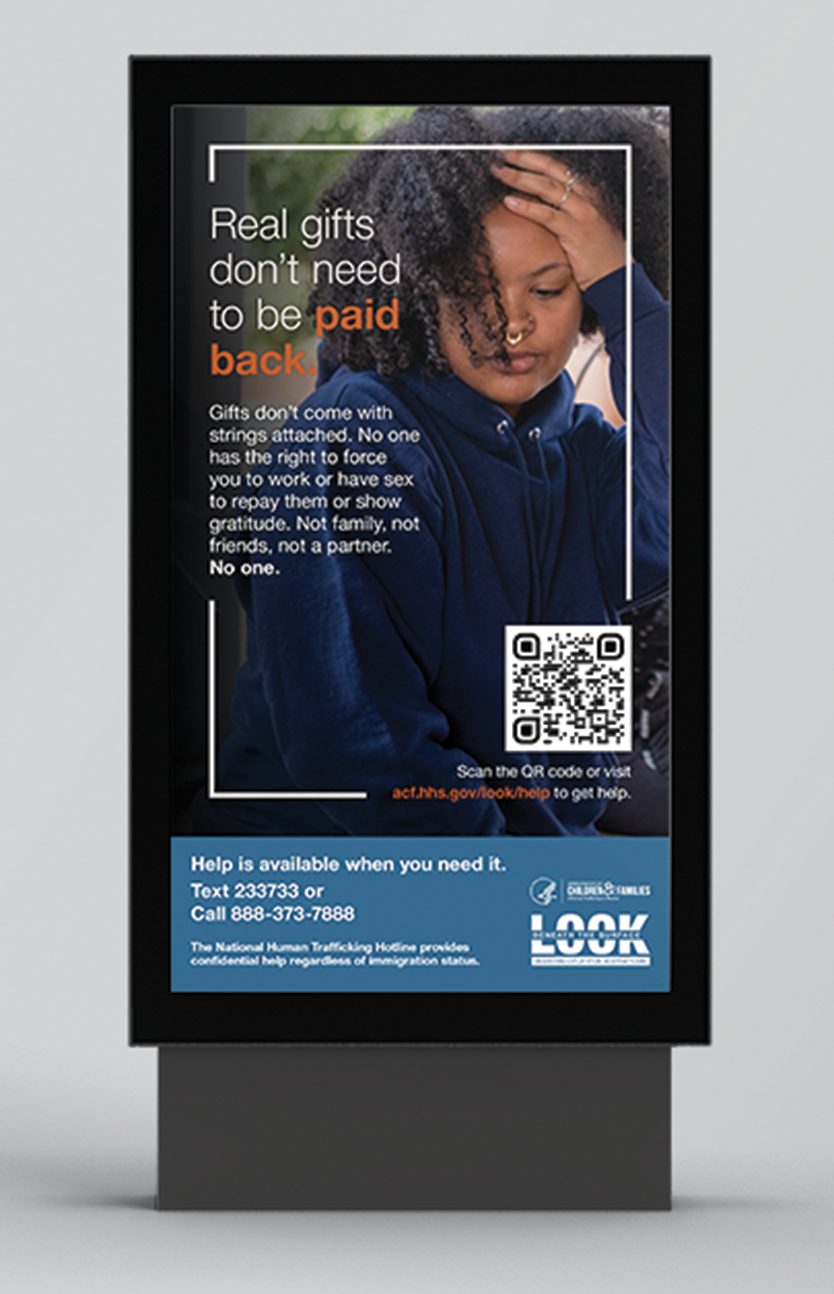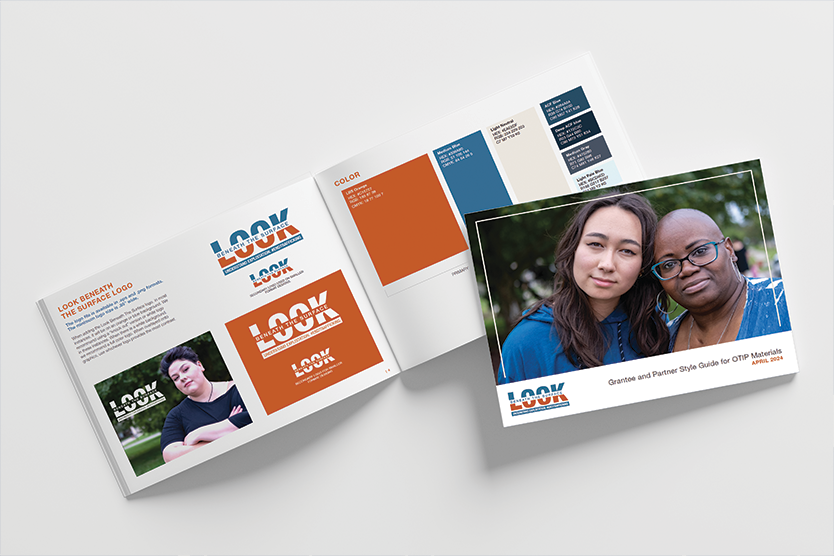
OVERVIEW
The Office on Trafficking in Persons (OTIP) is a sector within the Administration for Children and Families (ACF), a branch of the Department of Human and Health Services (HHS). OTIP serves to help prevent human trafficking in the United States—a crime involving all forms of exploitation of a person for the purpose of compelled labor without fair pay or forced or coerced sex acts for any reason. OTIP also supports adults and children who are currently experiencing, are at high risk of experiencing, or have previously experienced human trafficking situations by providing them with access to information, resources, food, and shelter.
ACF’S NEEDS
OTIP presented a need to revamp the Look Beneath the Surface (LBS) public awareness campaign to better reach individuals and marginalized groups who are often at a greater risk of experiencing trafficking. Before this contract, a gap existed between how OTIP disseminated information to vulnerable people and communities and how those people and communities consumed information. In addition, OTIP’s LBS materials were outdated and portrayed inaccurate images of trafficking that were not relatable to those in trafficking situations. OTIP sought to update those materials with audience-specific and relatable interventions to disseminate public health messages to vulnerable and exploited populations. OTIP also needed an overhaul of its website, which lacked basic UX (user experience)/ UI (user interface) best practices, buried information several pages deep, provided navigation that was not intuitive or easy to follow, and contained web pages that were dense with copy, making the pages uninviting to read.
STRATEGY
Schatz used an evidence-based approach based on months of qualitative and quantitative research to create relevant and relatable imagery depicting real-world scenarios of grooming and trafficking situations to better reach those in targeted audiences. Schatz took an empowerment approach to the messaging, knowing that people are more likely to reach out for help if they are given a sense of hope for something better. The campaign focused on providing information to those in or vulnerable to human trafficking situations about how to seek help. Schatz recommended messaging using person-centered, plain language developed through a public health lens. Deliverables were tailored to those used most frequently by each target audience and included outdoor, transit, social media, video, and broadcast messaging. Schatz also recommended the creation of resources for professionals and community service providers who interact with vulnerable populations to ensure better provider preparedness in getting these populations the support they need. By incorporating the principles of diversity, equity, and inclusion, Schatz successfully reflected in the disseminated materials the reality that trafficking affects all communities, people, gender identities, locations, and cultures.



APPROACH
Schatz took an organized and collaborative approach with OTIP to unveil market reach gaps and develop culturally appropriate and public health-based deliverables, which were peer-reviewed by consultants with lived experience to ensure that each product was culturally appropriate for the respective target communities. The Schatz team created a public awareness campaign using print, video for social media and at gas stations, outdoor in the form of truck skirts, transit in the form of bus ads and digital subway ads, online and geo-targeted mobile ads, and social media, including the use of social media influencers. Schatz also conducted a photo shoot to develop authentic photography to use in the outreach materials. The team scouted culturally and industry-appropriate locations and scenarios and recruited models who identified with the targeted outreach groups to provide authentic imagery and resources.
The Schatz team developed videos using original illustrations to depict a wide variety of races and gender identities that would resonate with different target audiences. Schatz facilitated the translation of all campaign materials into multiple languages, including Spanish, Haitian Creole, Ukrainian, and Russian. Hotline cards were translated into 27 different languages, including Indigenous languages such as K'iche'. Professionals likely to engage with vulnerable populations received brochures and online resources encouraging them to register for training with OTIP to learn to properly identify, support, and connect identified people with resources and help.
Partner organizations received an online toolkit to download and customize outreach materials. Schatz enhanced the OTIP website by conducting a full UX/UI analysis and providing a complete set of recommendations to improve, restructure, and redesign web pages to house content in a more intuitive and user-friendly manner. The team developed a visual concept for the individual web pages that could be easily adapted to show a multitude of races, genders, and gender identities. Schatz provided copywriting and copyediting, web design that included original illustrations, and web development to further hone the website. This comprehensive overhaul required ongoing collaboration with the HHS IT department to implement the new website architecture and updated pages.
RESULTS
- Schatz successfully elevated the LBS brand and campaign materials by making them relevant and relatable to those in or vulnerable to human trafficking. The total estimated number of impressions for the bus ads is nearly 12 million, running in eight markets in states across the country. The truck skirt campaign is estimated at nearly 3.9 million impressions—the Spanish versions garnered more than 1.94 million impressions, the English versions nearly 989,000 impressions, and the Creole versions more than 962,000 impressions. The subway transit campaign generated more than 4.17 million estimated plays across 64 stations with more than 5.6 million impressions.
- LBS materials created by Schatz specifically for Ukrainian refugees coming to the United States after the escalation of the Russia-Ukraine War received accolades at the 2023 President’s Interagency Task Force meeting. On the basis of the work for the LBS campaign, HHS enlisted Schatz to create original logos and promotional materials for its 2023 National Human Trafficking Prevention Summit.




